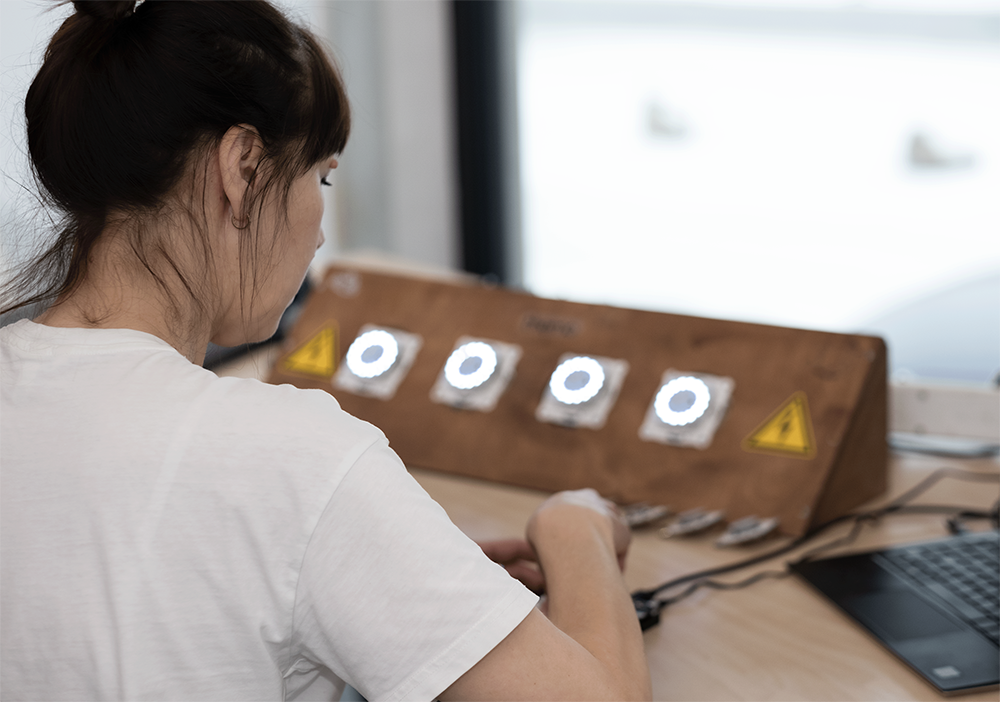In a world racing toward greener energy and smarter homes, Estonian cleantech company Themo has found a unique path. Their floor heating thermostat looks simple on the surface, but under the hood is a cloud-powered system that not only saves money—it helps stabilize the electric grid.
At the center of this innovation is Taaniel Uleksin, Themos Device and DR team lead, who oversees everything from hardware development to demand response systems and cloud-based intelligence.
“I’m responsible for devices, demand response, and quite a bit of the data science that supports them,” Uleksin explains. “And because of that, I’m also the main contact point for technical support. I know how the system works from end to end.”
Less Hardware, More Intelligence
Unlike many smart thermostats on the market, Themo doesn’t aim to impress with complex touchscreens or onboard AI. The intelligence lives in the cloud, not the device.
“We made a deliberate choice to keep the device itself simple. Just a button – press it, and the floor heats. Press it again, it doesn’t,” Uleksin says. “All the smartness happens in the cloud. That keeps the hardware affordable and lets us keep older devices updated with the latest features.”
This architecture allows Themo to process data far beyond the capabilities of a typical thermostat. From real-time electricity prices to weather forecasts and user behavior, Themo’s backend uses it all to calculate optimal heating schedules.
“Competitors might have learning algorithms locally on the device, but they can’t factor in electricity market data or temperature predictions like we do,” Uleksin notes. “That’s why we’re often able to deliver better savings—especially during volatile seasons like spring and autumn.”
From Savings to Earnings
Themo’s innovation doesn’t stop at cost savings. The company is also pioneering residential participation in demand response (DR), a method where energy consumers adjust their usage in response to signals from the grid.
“Our devices don’t just save energy, they can actually earn money for the user,” says Uleksin. “We’re active in the FCR-D down market right now. When grid frequency goes above 50.1 Hz, our devices turn on to consume electricity and help bring it back down.”
While most demand response actors are large power plants adjusting their generation, Themo is doing it on the consumption side, with devices that individually use as little as 300 watts. It takes more than 1,000 thermostats to form the minimum market entry unit - 1 megawatt - but Themo has figured out how to orchestrate this at scale.
“That’s what makes us unique. Most participants are big power producers. We’re coordinating thousands of small consumers. Technically, it’s challenging. But it opens the door to something much bigger.” Uleksin points out.
A Fully Scalable Grid-Ready System
What makes this model so powerful is that no new hardware is required when Themo enters new energy markets. Because intelligence is centralized, upgrades and new features are delivered via the cloud.
“That’s the beauty of centralized control,” Uleksin says. “Users don’t have to buy new devices when we expand to new markets or add features. The same thermostat they bought last year can participate in demand response today.”
Currently, Themo is rolling out demand response services to large B2B customers, buildings with hundreds of thermostats installed. But the company’s ambitions reach much further.
“Our goal is to make this available to every household,” Uleksin says. “In the future, you’ll just open the app, check a box that says ‘participate in demand response,’ and your thermostat becomes part of the grid solution.”

From Thermostats to Broader Energy Control
Themo is also exploring control of other household heating devices; boilers, radiators, and more. The long-term vision is to expand beyond thermostats and into full home energy flexibility.
“If it plugs into the wall and heats, we want to be able to control it,” Uleksin says. “That’s how we unlock more flexibility. Not just for savings, but to help stabilize the grid.”
And the company’s approach keeps the end-user experience simple: no complicated setup, no manual schedules, and no learning curve.
“We don’t want to make people configure their own heating logic,” Uleksin says. “Just install the device, open the app, and let the system do the work. It’s smart where it matters, but simple where it counts.”
One Product. Three Goals.
Themo is doing something few smart home products achieve: delivering personal savings, grid support, and green energy enablement - all through one small thermostat.
“For us, savings, demand response, and support for renewable energy aren’t separate goals - they’re one system,” Uleksin concludes. “And we’re doing it all with a device that fits in the palm of your hand.”






